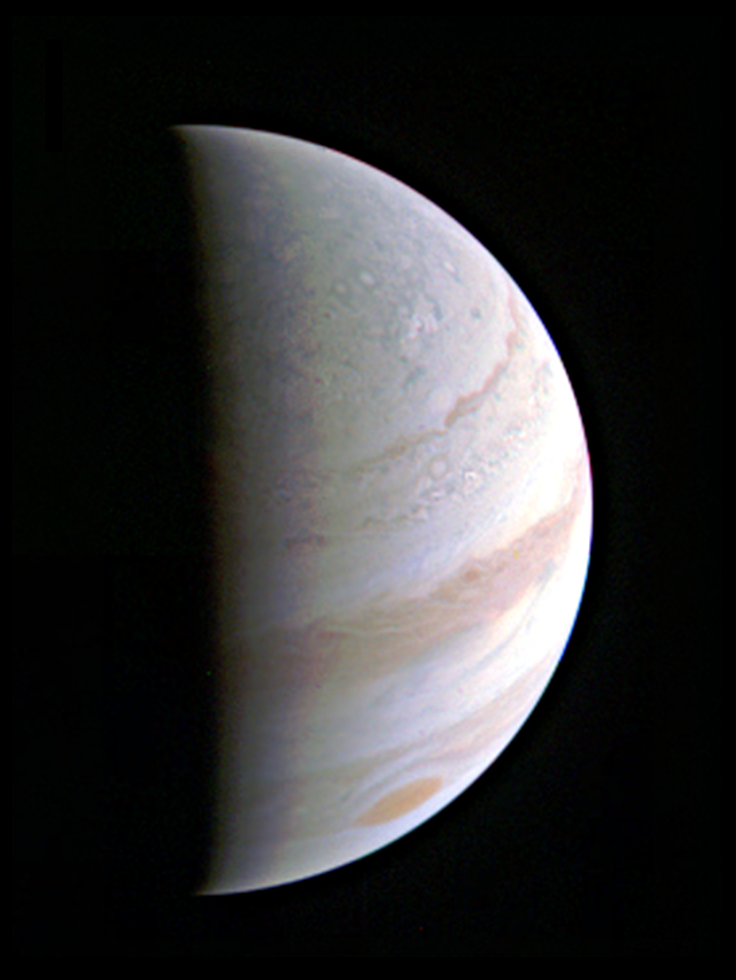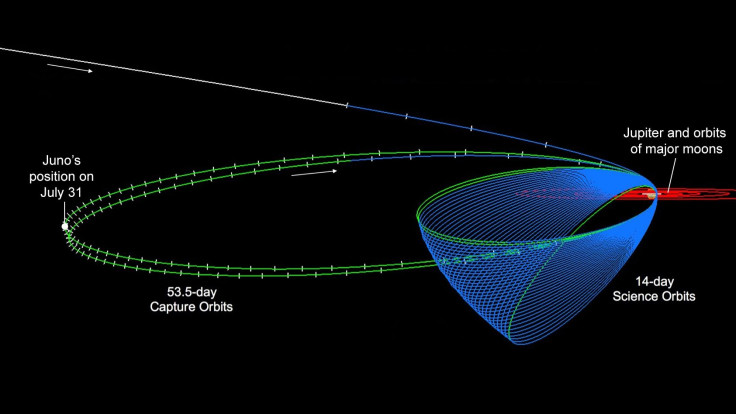NASA’s Juno Spacecraft Completes Its First, And Closest, Jupiter Flyby

NASA’s Juno spacecraft successfully completed the first of its 36 orbits of Jupiter on Saturday. Images captured by JunoCam — the camera on board the solar-powered probe — during the flyby will be released in the coming weeks, the space agency said in a statement released Sunday.
At the closest point in its orbit around the gas giant, Juno flew at a distance of just 2,600 miles above Jupiter’s atmosphere. This flyby, during which the spacecraft was traveling at a breakneck speed of 130,000 miles per hour, is the closest Juno will get to Jupiter during its prime mission.
The flyby also marked the first time all the science instruments Juno is carrying were active.
“We are getting some intriguing early data returns as we speak,” Scott Bolton, Juno principal investigator at the Southwest Research Institute in San Antonio, said in the statement. “It will take days for all the science data collected during the flyby to be downlinked and even more to begin to comprehend what Juno and Jupiter are trying to tell us.”
The images captured by Juno’s high-resolution color camera are to be released in the next couple of weeks. These images will include never-before-seen views of the Jovian atmosphere and the first glimpse of Jupiter’s north and south poles.
“We are in an orbit nobody has ever been in before, and these images give us a whole new perspective on this gas-giant world,” Bolton said.

Juno was launched in August 2011 and traversed nearly 2 billion miles of space to reach Jupiter. The spacecraft, named after the Roman god Jupiter's wife, will spend the better part of the next year-and-half trying to peer through the thick clouds surrounding the massive gas giant. The primary goals of the $1.1 billion mission are to find out whether Jupiter has a solid core, and whether there is water in the planet's atmosphere — something that may not only provide vital clues to how the planet formed and evolved, but also to how the solar system we live in came into existence.
At the end of its mission, Juno will dive into Jupiter's atmosphere and burn up — a "deorbit" maneuver that is necessary to ensure that it does not crash into and contaminate the Jovian moons Europa, Ganymede and Callisto.
© Copyright IBTimes 2024. All rights reserved.






















